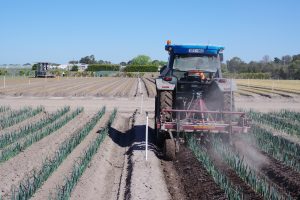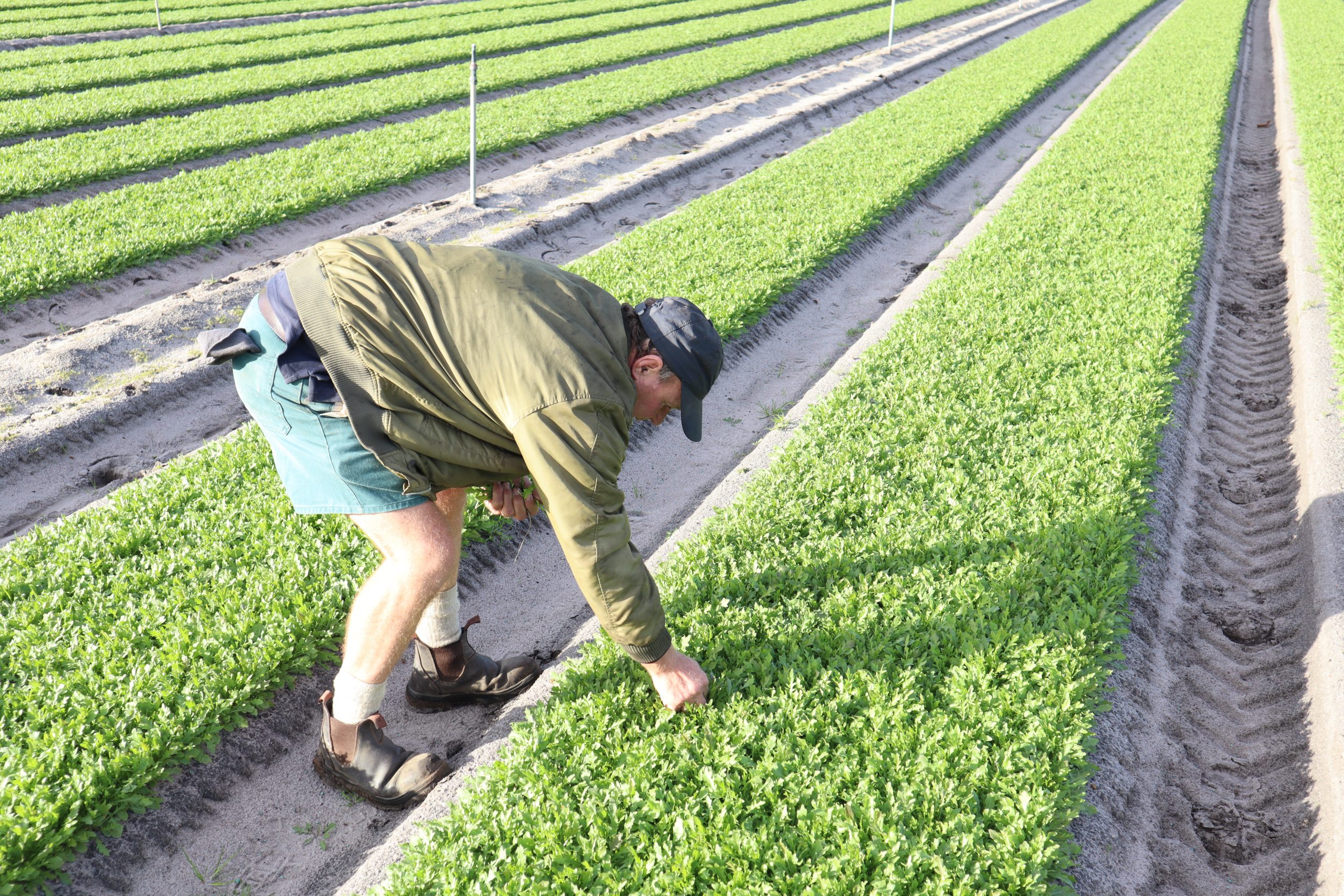Assessing the economic impact of weeds in Australian vegetable production
In 2019, a case study assessment of the farm-level economic impacts of weeds in vegetable production was completed as part of a broader weed management project. The assessment focused on a range of weed management practices that have potential for more widespread industry adoption. Can vegetable growers employ new methods to manage weeds on their farm in a cost-effective manner?
Although the economic impact of weeds in vegetable production has previously been estimated at the national level, information on the farm-level impact of weeds in the industry has been limited.
Previous research suggests that vegetable growers have difficulty in reliably estimating the economic impacts of weeds within their crops. Adopting a case study approach, a team from the University of New England sought to evaluate the individual farm-level economic impacts of weeds in vegetable production. These were assessed using ‘loss-expenditure’ and ‘partial-budgeting’ approaches, evaluating the direct costs of managing weeds and their estimated economic impact on crop yield and quality. A number of innovative weed management practices were included in this assessment.
A strategic approach to weed management for the Australian vegetable industry (VG15070) is a strategic levy investment under the Hort Innovation Vegetable Fund.
Farm-level impacts
The economic impact of weeds was assessed on 19 vegetable farms in New South Wales, Victoria, Tasmania and Western Australia. Each case focused on a specific vegetable crop, including lettuce, cabbage, chard, potato, radish, leek, celery, parsnip, broccoli, green bean, rocket, and carrot. Four organic farms were included amongst the case studies.
Across the 19 farms, the weighted average reduction in operating profit due to weeds was found to be $2,090 per-hectare. This comprised $1,403 per-hectare net costs added due to weeds, and $687 per-hectare revenue lost due to weeds. The reduction in operating profit due to weeds on organic farms was approximately six times higher compared to those relying on conventional (herbicide-focused) weed management approaches.
Assessing innovative weed management
For the purpose of this study, the term innovative weed control practice referred to practices that were not used commonly within the Australian vegetable growing industry, which may have been recently developed or have potential for more widespread adoption by vegetable growers as part of an overall Integrated Weed Management program.
The farm-level impacts of adopting innovative weed control practices was assessed on 15 of the 19 farms, focusing on a specific innovative practice within a single vegetable crop. On one farm, two innovations were evaluated separately, resulting in a total of 16 case studies.
The innovative weed control practices evaluated were:
- Cover cropping (oats, ryegrass).
- Biofumigant-based cover cropping.
- Diligent hand weeding to reduce the weed seed bank to a manageable level over time.
- Sheet steam weeding.
- Stale seed beds.
- Inter-row tillage.
- Flame weeding.
The per-hectare impact of adopting the innovative weed control practices on whole farm operating profit across all 16 evaluations ranged from -$5,586 to $152,199. The impact was negative in six of the evaluations, but positive for the other ten.
For four of the six innovative weed control practices evaluated as having a negative economic impact, their benefits other than for weed control (e.g. benefits for soil health and structure in the case of cover cropping) were noted by interviewees, but could not be valued. This means the economic impact of some of these practices might actually be positive for the farm overall, if it were possible to value all of their benefits. This finding suggests that a vegetable grower’s decision to innovate is not necessarily driven by a single outcome alone, such as improved weed management. Other priorities and their related benefits and costs will also be considered, even if it is difficult to place a value on these. Indeed, when all farm management priorities are taken into account, it may be preferable to somewhat increase the economic burden of weed management in order to accrue benefits in other areas.
Additionally, initial management and setup costs for an innovative practice (such as inter-row tillage) may be high, but the economic benefits for weed management will accrue gradually over time.
Case studies of effective Integrated Weed Management in vegetable production
The University of New England team has been working with vegetable growers who have implemented different approaches to successfully reduce the weed burden in their vegetable crops.
Some video case studies of Integrated Weed Management (IWM) have been produced from this activity, and more are planned.
Although these specific cases are more relevant to some crops than others, the way of thinking (a willingness to try something different and sticking with it diligently once the approach has been proven to work) is relevant to everyone.
So far, the team has discussed diligent hand-weeding and pre-planting herbicides in cut-leaf vegetable crops with Maureen Dobra from Gingin, Western Australia and weed seed bank management using stale seed beds and inter-row tillage with Adam Schreurs from Clyde, Victoria.
You can watch IWM case studies on the project’s YouTube channel.
Find out more
Please visit the University of New England website or contact Michael Coleman at mcolema8@une.edu.au or 0437 403 644 or Chris Fyfe at cfyfe3@une.edu.au or 0401 200 045.
This project has been funded by Hort Innovation using the vegetable research and development levy and contributions from the Australian Government.
Project Number: VG15070


